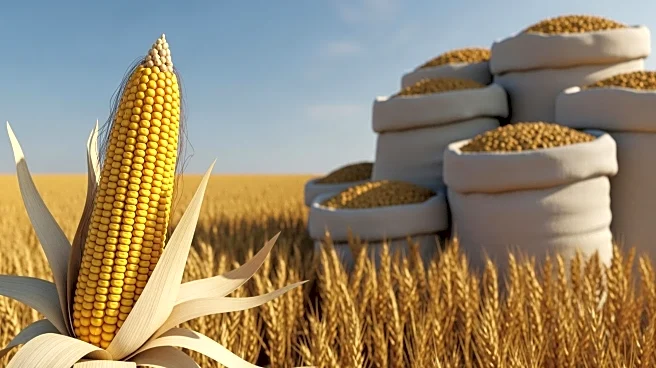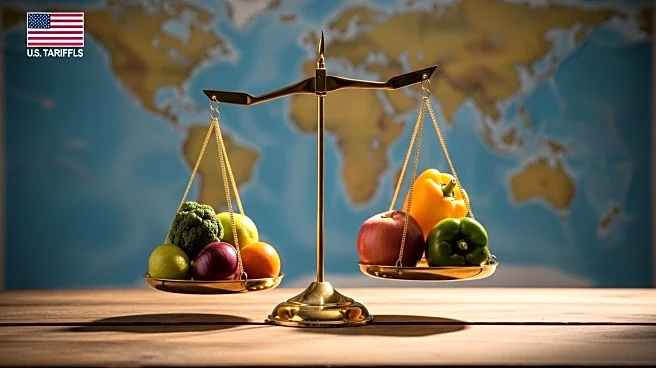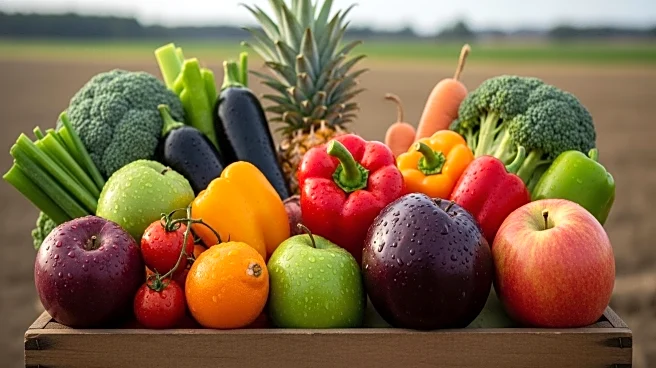What's Happening?
In the third quarter of 2025, agricultural commodity markets are experiencing divergent trends, with wheat facing a bearish oversupply crisis while soybeans and corn remain rangebound. Wheat production is projected to reach 806.9 million metric tons, driven by strong harvests in the European Union, Russia, and Canada. This oversupply has led to depressed prices, with Chicago Board of Trade wheat futures closing at $5.04 per bushel, down 12% from January. Meanwhile, soybeans are navigating a more balanced landscape, supported by Brazil's dominance as a global supplier and biofuel mandates. Corn markets are influenced by record production and global competition, with U.S. ending stocks projected at 2,117 million bushels, the highest since 2018/19.
Why It's Important?
The divergent trends in these commodities have significant implications for investors and stakeholders. Wheat's oversupply crisis presents shorting opportunities, but geopolitical risks could disrupt trade flows. Soybeans' structural balance suggests a neutral investment stance, with attention to Brazil's biofuel policies and U.S. weather patterns. Corn's record stocks and export competition favor a cautious approach, though potential demand from China could alter the outlook. These dynamics highlight the need for tailored strategies and granular market analysis, as weather, trade policy, and energy prices will dictate short-term volatility.
What's Next?
The agricultural commodity markets will continue to be shaped by geopolitical developments, weather patterns, and trade policies. Wheat prices may face further downward pressure due to the fundamental imbalance of supply and demand. Soybeans could experience price swings tied to U.S.-China trade tensions and Argentina's weather conditions. Corn markets may see temporary boosts if China re-enters the market or if U.S.-China trade talks resume. Investors will need to monitor these factors closely to navigate the evolving landscape.
Beyond the Headlines
The oversupply in wheat and the stability in soybeans and corn reflect broader trends in global agriculture, including the impact of biofuel policies and geopolitical shifts. The interplay between these factors could lead to long-term changes in production and trade patterns, influencing global food security and economic stability. Additionally, the focus on biofuels highlights the growing importance of sustainable energy sources in shaping agricultural markets.













